- Apply
- Visit
- Request Info
- Give
Scroll

Families are children’s first and most important teachers. Children are best supported when early care and education providers work in partnership with their families. By building strong relationships with families, early childhood educators can empower parents with the tools they need to support their child's learning. The videos and resources below are intended to encourage the development of positive relationships with families. Within this collection, there are resources that can be shared with families, while others could be used to help providers think about the strategies they use to engage family involvement.
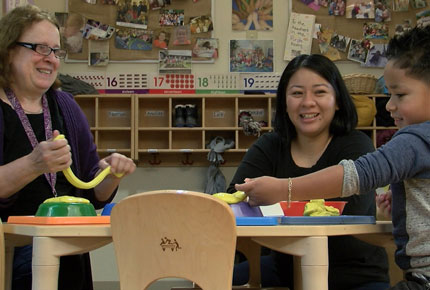 Learning About a Child's Family Culture (2:28)
Learning About a Child's Family Culture (2:28)
While most teachers agree that children's cultural differences should be respected or even celebrated, it's not always clear what steps teachers should take to ensure that all children and families feel welcome and understood in the classroom and school or center. In this video, Dr. Tanya Moorehead explains that one important way teaching professionals can demonstrate their commitment to supporting children from all backgrounds is to take the time to get to know something about the unique family culture of each child in their classroom.
See video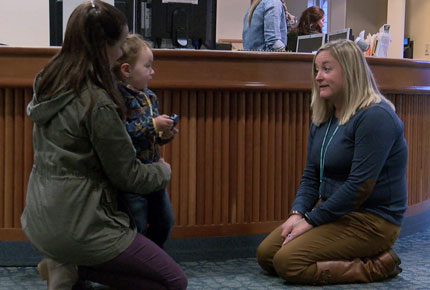 Building Positive Relationships with Families (2:04)
Building Positive Relationships with Families (2:04)
Economic, educational, and other gaps between teachers and parents can sometimes make it challenging to build true partnerships. In this video, fatherhood expert Doug Edwards from Real Dads Forever discusses some strategies teachers can use to bridge those gaps and build stronger relationships with families.
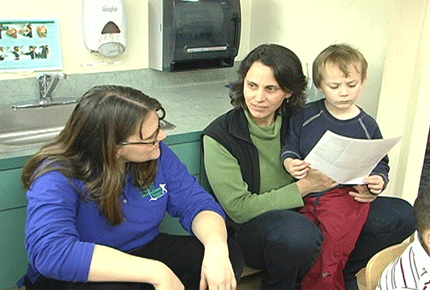 Involving Families (5:39)This video discusses the importance of building strong, trusting relationships with families. When early childhood administrators and teachers provide a variety of opportunities for families to become involved in classrooms and in programs, parents gain an understanding of what their children are learning, and they have the ability to extend the learning at home.
Involving Families (5:39)This video discusses the importance of building strong, trusting relationships with families. When early childhood administrators and teachers provide a variety of opportunities for families to become involved in classrooms and in programs, parents gain an understanding of what their children are learning, and they have the ability to extend the learning at home.
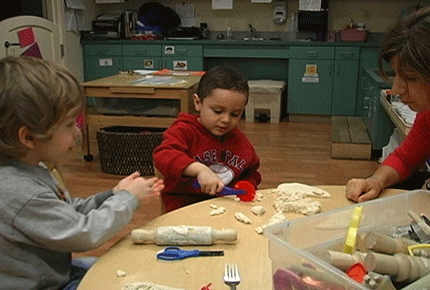 Supporting Children's Individual Needs (7:28)Early childhood professionals face the continual challenge of planning for the entire classroom while meeting each child’s individual needs. This video stresses the importance of observing children and assessing their strengths and needs to determine how best to support them, and teacher Niloufar Rezai reflects on strategies she used to identify and support a child’s learning needs, including working closely with the child’s family and giving them ideas for activities to do at home. When teachers identify children’s interests, work closely with their instructional team, and partner with families, they can effectively support the learning needs of all children in their classroom.
Supporting Children's Individual Needs (7:28)Early childhood professionals face the continual challenge of planning for the entire classroom while meeting each child’s individual needs. This video stresses the importance of observing children and assessing their strengths and needs to determine how best to support them, and teacher Niloufar Rezai reflects on strategies she used to identify and support a child’s learning needs, including working closely with the child’s family and giving them ideas for activities to do at home. When teachers identify children’s interests, work closely with their instructional team, and partner with families, they can effectively support the learning needs of all children in their classroom.
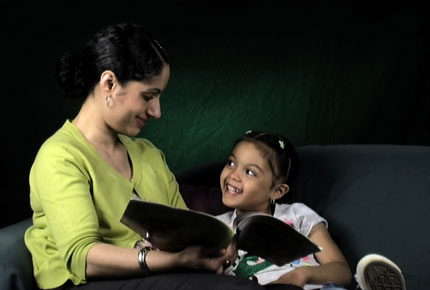 Family Reading Time/ La hora de lectura en familia (series)Research shows that having conversations with children during book reading can significantly improve their understanding of the book and build their early literacy skills. This video series provides guidance for how parents from multilingual households can support their children's language and literacy development, as well as help maintain first language proficiency by spending time reading every day in both English and their first language. Videos are available in both English and Spanish.
Family Reading Time/ La hora de lectura en familia (series)Research shows that having conversations with children during book reading can significantly improve their understanding of the book and build their early literacy skills. This video series provides guidance for how parents from multilingual households can support their children's language and literacy development, as well as help maintain first language proficiency by spending time reading every day in both English and their first language. Videos are available in both English and Spanish.
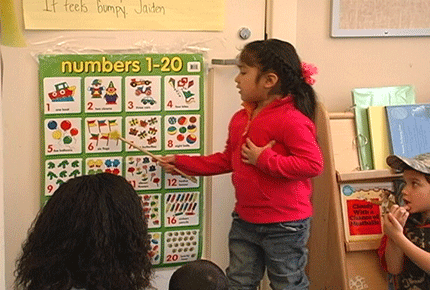 Supporting English Language Learners in the Preschool Classroom (7:24) Many preschool classrooms now include children whose first language is not English. This video stresses provides guidance for early childhood professionals on how to support children as they develop oral language skills in both their first and second languages.
Supporting English Language Learners in the Preschool Classroom (7:24) Many preschool classrooms now include children whose first language is not English. This video stresses provides guidance for early childhood professionals on how to support children as they develop oral language skills in both their first and second languages.
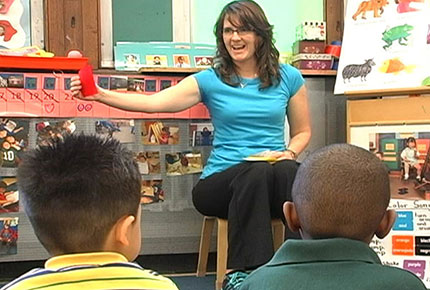 Inspiring Lessons (29:20)In 2008, the Center began a three-year effort to improve the early literacy skills of over 500 preschool children in Windham, Connecticut, by providing materials and training to their families and professional development to their teachers. This video includes interviews with family members and shares some of the important lessons learned during the Community Partners for Early Literacy (CPEL) project.
Inspiring Lessons (29:20)In 2008, the Center began a three-year effort to improve the early literacy skills of over 500 preschool children in Windham, Connecticut, by providing materials and training to their families and professional development to their teachers. This video includes interviews with family members and shares some of the important lessons learned during the Community Partners for Early Literacy (CPEL) project.
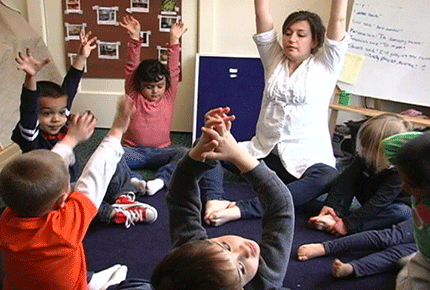 Encouraging Physical Activity in Preschoolers (8:27)Physical exercise is critical for preschoolers’ cognitive and physical development. This video explores how preschool teachers can incorporate physical activity into the daily routine and involve parents in encouraging physical activity at home.
Encouraging Physical Activity in Preschoolers (8:27)Physical exercise is critical for preschoolers’ cognitive and physical development. This video explores how preschool teachers can incorporate physical activity into the daily routine and involve parents in encouraging physical activity at home.
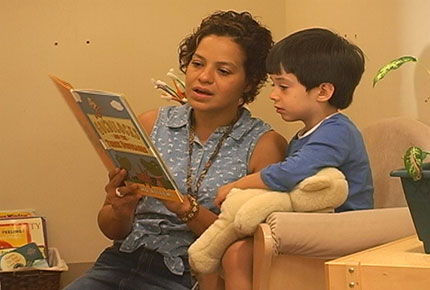 Supporting Oral Language Development in Dual Language Learners (10:49)This video explores the importance of preserving a child’s first language, the four stages of English acquisition for dual language learners, and a multitude of strategies that teachers can implement to help dual language learners develop the oral language skills they need to become proficient English speakers. Included is an interview with a parent who describes how his child's teacher supported his child, for whom English is a second language, as well as their family.
Supporting Oral Language Development in Dual Language Learners (10:49)This video explores the importance of preserving a child’s first language, the four stages of English acquisition for dual language learners, and a multitude of strategies that teachers can implement to help dual language learners develop the oral language skills they need to become proficient English speakers. Included is an interview with a parent who describes how his child's teacher supported his child, for whom English is a second language, as well as their family.

